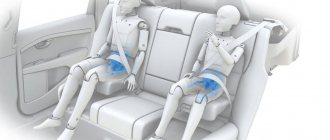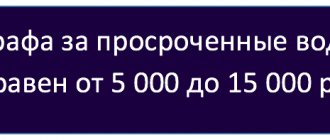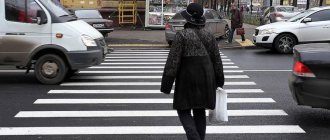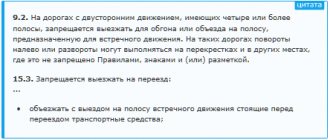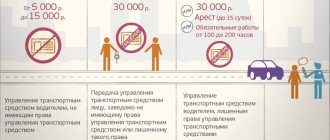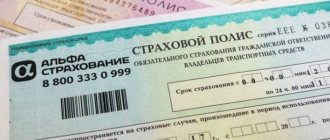Both drivers and passengers of vehicles are full participants in road traffic. This means that they are all required to obey existing rules, one of which states that while driving, both the driver and all his passengers must wear seat belts. Moreover, this applies not only to personal cars, but also to some types of public transport - for example, taxis or minibuses, which were initially equipped with these restraint devices. However, passengers often, for one reason or another, neglect the duty to buckle up. What should drivers do in such cases? Who is responsible for an unfastened seat belt: the passenger himself, the owner of the vehicle, or both? Who pays the fine for an unbelted passenger and is it possible to avoid this penalty? We explain these and other important points together with lawyer Ekaterina Antonova .
photo from the personal archive of Ekaterina Antonova /
Are there penalties for unbelted passengers in 2021?
Clause 2.1.2. Road Traffic Rules (TRAF) states: when driving a vehicle equipped with seat belts, the driver must not only be fastened himself, but also not carry passengers who are not secured with belts. If for certain reasons a passenger refuses to buckle up, the traffic police officer has full legal authority to issue a fine for such a violation.
Fine for an unbelted passenger
Since pedestrians and passengers in most cases have not graduated from driving schools or passed exams on knowledge of traffic rules, they are not aware of many of them and, in addition, do not think about their own safety.
There are reasons for this:
- They did not memorize all the traffic rules, like people who took their license.
- They don't have any special IDs.
- They do not drive a car that is considered a source of increased danger.
- They practically never encounter traffic police officers.
However, the norms of the Code of Administrative Offenses and Traffic Regulations establish provisions that protect the lives of both people in the car and those walking along the street. Therefore, if a traffic police officer sees that a passenger is sitting in a passing vehicle and he is not protected by a belt, then by law he can fine him 500 rubles. The amount of the fine is the same in all cases.
Moreover, it can be written out not only if a person was driving unprotected by a seat belt in the second row of seats in a car, but even if he was traveling in a taxi or on an intercity bus.
Who does the fine apply to: the driver, the passenger, or both?
According to the law, responsibility for each of the passengers of a vehicle lies with the driver, so he should not start driving until he is sure that they are fastened.
However, this does not mean that the traffic inspector will “punish with the ruble” only the driver: the administrative penalty will also affect the passenger who violated the rules.
“Moreover, even ignorance of the law, as we know, does not exempt a person from responsibility, so each individual unbelted passenger will have to pay a fine, even if we are talking about a large company that, for example, used the services of a passenger taxi,” notes Ekaterina Antonova.
Lack of compulsory motor liability insurance policy
It was known last year that it is planned to “teach” cameras to check whether motorists have an MTPL policy. The Russian Union of Auto Insurers (RUA) announced that it is ready to launch checks for the availability of compulsory motor liability insurance policies through traffic cameras throughout the country. Tests of the cameras' capabilities were carried out in Moscow together with the Ministry of Internal Affairs and the Data Control Center. If the camera recorded a car without compulsory motor liability insurance, the owner received a notification of the violation and an offer to take out insurance.
At the moment, the innovation is only in plans, since specialists have not yet been able to combine the RSA database with information about insured motorists and the traffic police information base. But the likelihood that cameras will “catch” cars without compulsory motor liability insurance in 2021 is high.
What is the fine for driving without compulsory motor insurance?
It is assumed that the violator will receive a fine of 800 rubles once a day. That is, for every day that a violator drives without a policy and is caught by cameras, he will be required to pay 800 rubles.
What is the fine for not wearing a seat belt for the driver and passenger in 2021?
Responsibility for neglecting the rules for transporting passengers regarding the use of seat belts is stipulated by Art. 12.6 of the Code of Administrative Offenses of the Russian Federation for the driver: according to this rule, the fine is 1000 rubles. At the same time, the responsibility of the passenger is provided for in Art. 12.29 of the Code of Administrative Offenses of the Russian Federation and the amount of the fine for it is 500 rubles. In some cases, instead of a monetary fine, a passenger who has violated the rules may be given a warning.
Financial liability for an unbelted passenger also applies to passengers traveling in the back seat, provided that the vehicle is equipped with rear seat belts.
Responsibility
The penalties themselves for violators will be different. The driver is subject to a fine of 1,000 rubles. While the passenger may receive a warning. But the maximum liability for him will be a fine of 500 rubles. The listed penalties are provided only for adult passengers.
Such a violation in relation to a minor entails much stricter liability. If a child travels in a car unbelted, the responsibility will be as follows:
- 3000 rubles for ordinary drivers;
- 25,000 rubles for officials obliged to monitor the fulfillment of official obligations by their employees;
- 100,000 rubles for organizations.
Thus, an identified violation for a taxi employee can cost the company a fairly large sum. In addition, the driver himself will be fined, as well as his manager, who did not sufficiently control the fulfillment of labor obligations by his employee.
It is important to know that transporting children means not only the obligation to fasten them with seat belts. But this also includes the requirement to use mandatory constructions until the child reaches a certain age. You can learn more about this from the video presented.
Options for children's designs
The main purpose of their use is to create comfortable and safe conditions for the baby when driving in vehicles. And since the child’s growth does not always allow him to fully fix his correct position on the seat, special technical designs have been developed. The traffic rules do not set strict restrictions on them, but only suggest possible ways to restrain the baby. Such technical means include:
- special chairs designed for different ages and weights of children;
- child seat belts , allowing you to properly fasten your child;
- adapters for adults that help adapt an existing belt to a child.
All of them are necessary so that at the time of an accident the child is correctly secured in his place, and the belts provide the necessary assistance in such a situation. Each device has its own age. Special chairs are usually used for up to 3-5 years. Since they are the most convenient for transporting such small children. For babies under one year old, special cradles are more often used, since during this period they cannot yet be in a sitting position on their own.
At older ages, adapters or special child belts are used to help correctly secure the child’s body position in a regular car seat.
The requirement to use such technical means applies only to children. The need for their use disappears after the teenager reaches 12 years of age. From this age, it is considered that children have reached the required height and regular belts are enough for them. Therefore, the liability for their unsafe transportation is, as for an adult, 1000 rubles. But since a teenager under 16 years of age cannot receive administrative liability, a fine is imposed only on the driver. The most interesting thing is that the parent is also exempt from paying (provided that he is not the driver).
How to prove that a seat belt is not fastened, and who issues a fine for an unfastened passenger?
According to the general rule, a fine for wearing a seat belt is imposed on both the driver and the passenger by the traffic police inspector.
“The inspector sees that the driver or passenger is driving with an unfastened seat belt, stops the car and draws up a report,” says Ekaterina Antonova. — Recently, fines from cameras for wearing a seat belt have also been practiced. Within one second, the camera takes several photographs of the car, and then the information is sent to the server, where it is analyzed by a computer and, when a violation is detected, automatically generates the appropriate materials, on the basis of which the traffic police officer generates a resolution to pay a fine.”
Fine for wearing a seat belt over the top
There are still disputes among car owners about the correctness of fastening a seat belt. For example, the belt is passed only over the head and the lumbar strap is omitted.
This situation is not explained in detail in the traffic rules. Although in the case of child car seats or other child restraint structures, it is indicated that everything must be done in accordance with the instruction manual.
As for motorists, if their body is clearly secured with a special strap and the instrument panel indicates that the belt is fastened, then there is in fact no administrative violation.
But the law in this case is clearly not on the side of the drivers. Most often, people have to incur financial losses to pay off the fine.
How to avoid a fine for not wearing a seat belt in 2021?
One of the key grounds for canceling an issued fine is the incorrect completion of the relevant protocol by a traffic police officer.
“Therefore, you should carefully study this document: if it contains erroneous information about the driver or the vehicle he was driving, then the violator has the right to appeal against the drawing up of the protocol. If a citizen disagrees with the punishment, he can challenge it in court within 10 days,” explains Ekaterina Antonova.
How to appeal to the traffic police?
If you disagree with the written violation protocol or disagree with the existence of a violation, you can try to challenge the fine for not wearing a seat belt, for which you need to follow certain actions. Writing a complaint addressed to the head of the traffic police. The main aspects of the document: data of the sender of the complaint, description of the date and time of the administrative violation, data of the inspector who compiled the protocol, description of the details of the violation and facts that indicate the unjustified application of punishment.
The complaint must be accompanied by all available materials that in one way or another can serve as evidence of the driver’s innocence (maps, diagrams, photographs, video recording).
You can avoid penalties on some other legal grounds:
- the design of the seat belts has failed (in this case, the driver must prove that at that moment he is heading to a service station to have the problem fixed);
- both the driver and passengers took off their seat belts after the car stopped;
- the initial absence of seat belts in a particular car model (this design is not preinstalled by the manufacturer). If the belts were removed by the car owner himself, it will not be possible to avoid a fine.
pixabay.com/PD/
Nuances
It is important to know some of the features provided for by law when making this decision:
- The driver will be fined only 1000 rubles , regardless of the number of violators in his car. But each passenger pays for himself.
- For this violation , you can receive an unlimited number of fines if the driver continues to drive without seat belts, or his passengers continue to not wear seat belts.
- The obligation to wear seat belts is not limited to those sitting in the front of the car. Everyone who has a seat with special belts must wear a seat belt.
The law provides for some injustice, since the passenger can only receive a warning, but the driver is required to pay a fine. Therefore, the driver is interested, first of all, in monitoring that everyone is wearing seat belts according to the rules.
Is there a discount on the fine?
An unbelted passenger who has been issued a fine can reduce its amount if he pays promptly: in this case, the discount on the fine will be 50%. Such a “bonus” is valid for 20 days from the date of the decision on an administrative violation.
One way or another, the passenger, as well as the driver of the vehicle, must realize and remember that transporting passengers who are not wearing a seat belt is a serious violation of traffic rules. And even if in life he himself is accustomed to “hoping for chance,” then he should at least buckle up out of a sense of respect and concern for the driver. Indeed, in the event of an accident, he will have to answer before the law for any injury received by unbelted passengers, as well as to compensate for material damage caused to their health. And for the offender himself, a much greater punishment than a fine may be the loss of life or disability as a result of an accident, the tragic consequences of which could have been avoided with the help of a regular belt.
Many problems
Such fines not only protect the lives and health of people, but also help the driver himself avoid problems.
The fact is that any passenger in a vehicle has the right to file a lawsuit against the driver if an accident occurs due to his fault and people inside the car are injured. Transporting passengers who are not wearing standard seat belts is considered a serious violation, and, therefore, financial liability arises on the part of the car owner. Damage caused by a car as a source of increased danger is compensated by its owner, regardless of fault. Partially, health damage is covered by compulsory motor liability insurance within the established insured amount of 500 thousand rubles. However, the cost of treating multiple people can be much higher. They are collected from the driver. Moral damage is compensated by court decision.
Will there be a fine if there are no seat belts in the car?
Very often, older cars may not have seat belts in the rear. The issue of the fine in this case is ambiguous, since it depends on whether the belts are provided by the manufacturer:
- if the belts are provided by the factory, but you simply removed them for one reason or another, or if there are standard fastenings for the belts, but there are no belts themselves, then the fine will be legal;
- if neither the belts themselves nor standard fastenings are provided for them, then the fine is illegal, because in this case there is no fault of the driver, and the Code of Administrative Offenses stipulates that a person is subject to punishment only if there is guilt in the violation. Moreover, even if you decide to equip such a machine with belts, then according to the law, in theory, a separate fine is imposed for changing the design.
Unfastened seat belt: legal consequences after an accident
Let's first define two main points:
1. Everyone should always wear a seat belt in a car;
2. Rear passengers need to wear seat belts too.
Arguments of opponents
I had one friend who, when driving, never buckled up. And being a passenger in my car, he always reluctantly put on his seat belt, just out of respect for me, or maybe he just didn’t want to wait for the car to stop “squeaking.”
I asked him thousands of times: “Why don’t you buckle up? What, seat belts were invented for beauty? Don’t you understand that this is your safety?” To which he replied: “Yes, I understand everything perfectly and I know that I’m wrong, and I completely agree with you, but here’s something... well, I just can’t... I feel somehow uncomfortable.”
After which I realized that our argument with him was useless. If a person is not comfortable in safety, then how? There are people who know how to learn from the mistakes of others, and there are people like my friend who learn only from their own. When he got into an accident with a truck, in which he and his passenger (both unbelted) miraculously survived, he finally began to buckle up.
Hopefully, not everyone will need such an example to become conscious about wearing seat belts. Therefore, I will conduct a small legal educational program.
Especially for skeptics who neglect seat belts on the second row, here is the following video:
New fines for not wearing a seat belt
Passengers, in accordance with traffic regulations, are required to wear them when traveling in a vehicle equipped with seat belts. The fine for not fastening a seat belt is 1,000 rubles.
Who pays the fine if the passenger does not wear a seat belt?
According to clause 2.1.2 of the traffic rules, the driver must wear a seat belt and not carry passengers who are not wearing seat belts. Accordingly, the driver pays 1,000 rubles for himself or for a passenger, and the size of the fine does not depend on how many people in the car did not use seat belts. In any case, the fine will be the same 1,000 rubles.
However, passengers will not go unpunished. According to clause 5.1 of the traffic rules, passengers must wear them when traveling in a vehicle equipped with seat belts. A fine of 500 rubles is imposed separately on each passenger or a warning is issued in writing.
What to do if the car does not have seat belts?
If the rear of the car is not equipped with seat belts by the manufacturer, but there are special elements for installing them (for example, brackets), that is, the design of the car provides for independent installation of belts, then the driver and passenger can still be punished. It is believed that the driver was required to install seat belts himself. If the design of the car does not provide for independent installation of belts at all, then you have no right to punish.
Photo: depositphotos.com
What happens if your passenger is injured in an accident without wearing a seat belt?
It is important that the driver bears full responsibility for the unbelted passenger, and here we are no longer talking about a fine, but about criminal punishment.
But I want to note that you will be punished as a driver only if all the consequences of the accident occurred as a result of your violation of traffic rules. That is, if you are found guilty. If the rules were not broken, there was no punishment. However, you are always financially responsible for your passengers! Yes, yes, you got it right: regardless of whether you are guilty or not. It all depends on the passenger himself. He has the right to make a claim either only to his driver as the owner of the source of increased danger or only to the culprit of the accident, or to both drivers at the same time. If the passenger died, then this right is assigned to the relatives of the deceased.
Can the at-fault driver's lawyer try to relieve him of his obligation to pay for your passenger's medical treatment if he was not wearing a seatbelt?
Let's imagine the situation.
You drove along and didn't bother anyone. Someone crashed into you, resulting in injury to an unbelted passenger in your car. The lawyer for the culprit of the accident, of course, can try to shake off the guilt of his client, emphasizing the fact that the person in your car put himself in danger because he was not wearing a seatbelt. But only if it proves that it really was so. However, as practice shows, the fact that the victim was not wearing a seatbelt will not play any role in the outcome of the case. The culprit will not cease to be a culprit, and compensation for harm caused to the health of the victim will also not decrease.
Can an insurance company refuse to pay a driver or passenger if they were not wearing a seat belt?
In theory, insurers can try to refuse payment. But even if there is a gross violation on the part of the insurer, expressed in refusal to pay, then full compensation can be achieved and the insurer’s actions can be declared unlawful through the court.
What to do if a passenger refuses to buckle up?
The law does not regulate this situation in any way. In fact, there is no way you can force the person who gets into your car to fasten their seatbelt. That is, if you want to do everything according to the law, you have two options. The first is to refuse transportation, that is, to disembark the passenger without talking. The second option is to take a simple written receipt stating that the passenger waives claims against you if he suffers in an accident while not wearing a seatbelt.
Will airbags deploy if seat belts are not fastened?
In some cars, the airbag only deploys when the seat belt is fastened, while in others it always deploys.
Vehicles equipped with airbags are equipped with impact sensors. Front sensors react to the vehicle's deceleration rate, as well as its own deformation. In the event of a collision, they are activated and signal the airbags to deploy.
If you were wearing a seatbelt at the time of the impact, the airbag will soften the impact. If not, then hitting the airbag will be no less dangerous than hitting the dashboard. In this regard, on some car models, sensors are installed that prevent the airbag from opening when the seat belt is not fastened.
Remember that airbags effectively protect the driver and passengers in the event of an accident only in conjunction with seat belts. If you are not wearing a seat belt at the time of an accident, you risk serious injury, regardless of whether your vehicle is equipped with airbags or not.
Appealing a fine
It is quite difficult to appeal a fine for not wearing a seat belt, and there are extremely rare cases when a driver manages to overturn the decision. At the same time, there are a number of cases when you can challenge a fine for a belt, successfully proving your case. This can be done when:
- the driver was not the owner of the car;
- the camera recording the unfastened seat belt made a mistake (for example, the color of the belt blended in with the driver’s dark clothes);
- the fine came on a car that was sold;
- the driver unfastened his seat belt after stopping (only if this can be proven, for example, there is a recorder in the car that takes pictures of the interior).
You can file a complaint within 10 days from the date of drawing up the decision. The application must be sent by letter with notification of receipt by mail to the address of the regional traffic police department. In case of refusal, you can challenge the decision in court.
Please note that to appeal a fine, you must collect all available evidence of innocence. To do this, you can use recordings from the DVR, testimony of witnesses, etc.
Fine for transporting children without a special seat
This offense is described in Article 12.23 of the Code of Administrative Offences. According to this document, any child under 12 years of age must travel in a car while in a special child seat, and this rule applies to both driving in the front passenger seat and in the rear. In the latter case, it is permissible to use a special restraint device that ensures the protection of the child.
The fine for transporting a child without using a seat or restraint device is 3,000 rubles. The driver is required to pay the fine, since a minor does not bear administrative responsibility until he reaches the age of 16.
If a child is over 12 years old, then the use of special protective equipment to ensure his safety when traveling in a car is not necessary. However, he must be wearing a regular seat belt.
Can a driver be fined for wearing a seat belt incorrectly?
The traffic rules and the Code of Administrative Offenses do not specify a specific method of using a seat belt, which is mandatory for all drivers and passengers. Article 12.6 of the Code of Administrative Offenses, as well as paragraph 2.1.1 of the Russian Federation Traffic Regulations, only states the obligation of all persons in the car to wear seat belts.
Thus, the traffic police inspector does not have the right to issue a fine to a citizen for improper use of a belt. This provision is supported by Article 1.5 of the Code of Administrative Offenses of the Russian Federation, which states that any doubts about a citizen’s guilt must be interpreted in his favor.
When can you drive without wearing a seat belt?
In the 2010 version of the traffic rules, the following people could ride in a car without wearing a seat belt:
- passengers in the back seat, if the design of the car does not provide for seat belts;
- driving instructors during lessons;
- employees of operational services, if identification marks are applied to the vehicle.
In 2021, changes were made to the Rules of the Road, so only passengers sitting in the rear seats can now not wear a seat belt while driving. But only in cases where the design of the car does not provide for the presence of seat belts.
Please note that pregnant women are no exception to the rule. They are also required to wear a seat belt while riding in a car.
